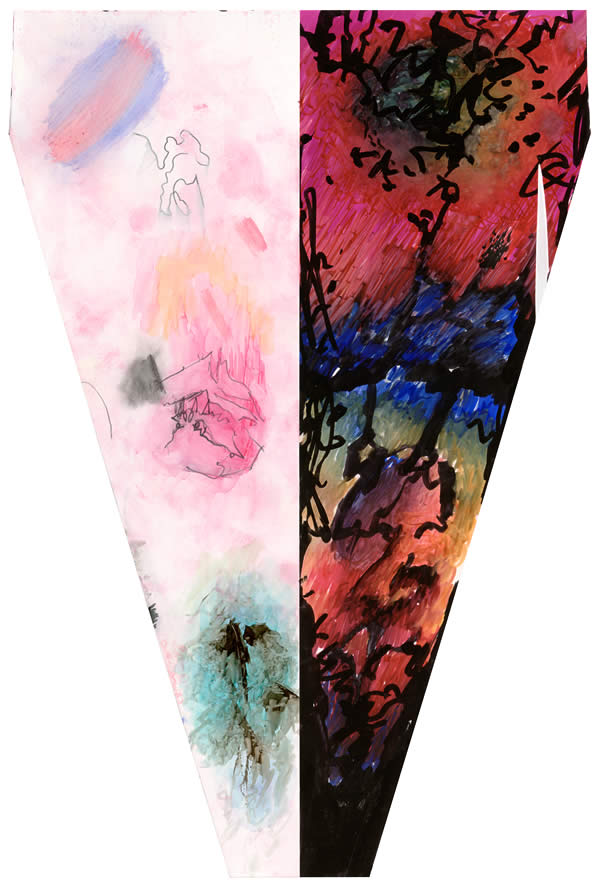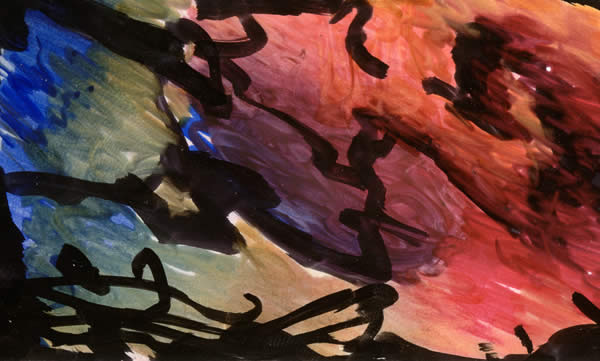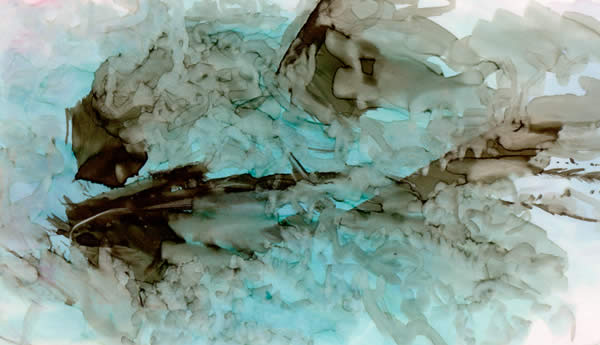My Latest Discovery: Yupo Watercolor Paper
Okay, enough for the suspense. Or, in my case, no one cares and forgot completely (including me) - an emotion I call "suspense" for some reason or another. So what am I talking about anyway? WAAAAY back here, I was talking about a discovery of "something that just might renew my interest in the fine, manual arts". Well, that might have been a gross exaggeration, but it is true (is that a contradiction?).
My recent discovery is simple, nothing profound or meaningful. I merely found a new type of paper. This art material looks like paper at first glance, but it in fact is not paper at all. It is called Yupo, made by a company with the same name in Japan. The "paper" as it is called is actually a form of synthetic plastic, a versatile material known as polypropylene.
One might think, "What good for art is a piece of plastic?" I might have thought the same thing until I tried Yupo paper. Believe it or not, you can write or draw on Yupo with pencils and pen, and the results are like no other. The finest and sharpest lines you've ever seen will never bleed (well, unless you smear them - but not on the initial lay-down). I cannot even describe the magical feeling of a writing implement passing across the perfectly smooth surface. Even people that don't like to draw or practice handwriting, I venture to say, will get a kick out of trying this material. Only those who have tried it will know what I'm talking about.
It sounds like I'm describing some sort of new drug. Well, I can honestly say I got a little buzz - a rush - when I first felt the paper. My coworkers can vouch for my excitement, as I immediately went around exclaiming the coolness of my latest find! Why on earth does this material excite me so much? As an amateur artist, I have a history with smooth papers. While most artists seem to prefer expensive, heavy art paper with a heavy tooth, I have generally always preferred smooth paper. Rather than the texture of the paper entering into the randomness and shape of the drawing (something I finally appreciate and use), in my early days I wanted total control. It bothered me that I couldn't get smooth lines with a pencil on rough paper. So I always looked for the smoothest stuff I could find. I discovered vellum a number of years ago and quickly became fond of its smooth surface and great erasing qualities. The translucency of vellum always bothered me, as I prefer an opaque drawing surface.
Several years back I took a Basic Design class at Portland State University. One item on the class supply list was a pad of "Bristol". At the time, I had heard of bristol, but didn't know much about it. I went to a local art store and picked up the cheapest pad of bristol I could find. With my broader knowledge of art materials today, I realize that what I found back then is not a typical bristol. Bristol is basically a hard-pressed, heavy paper that is generally smooth in texture and useful for illustration and many multi-media applications. What I found back then was far more interesting. It was called "plate bristol". It was clearly some sort of plastic material. I was drawn to the smooth texture and realized that some unique blending effects could be achieve by simply rubbing pencil lead around on the non-porous surface. I had discovered this technique mostly by accident back in high school, but now I found a material on which it could be fully utilized.
Ever since discovering this plastic surface years ago, I have been looking for more of the same. I had never found anything that came close, even looking through all the papers we carried at C2F Inc., an art supplies wholesale distributor (my current place of employment). Finally, a couple months ago I happened upon a sample of Yupo paper, provided by one of our buyers who was bringing it into our inventory. The second my fingers touched the surface I knew I had found what I had been seeking for a number of years!
The capabilities of the versatile Yupo paper brought back some of the interest in artistic ventures that has been a bit dormant since almost high school. Ironically, while I have definitely been drawing more because of this discovery, I haven't been using Yupo for most of my creations. I still want to explore its potential, but I was discouraged by perhaps its only weakness. Though it can be used to an advantage, the surface is so smooth that water-based inks, paints and pens can be wiped off with a swipe of the hand, even after days of "drying". In fact, you can reuse a single piece of waterproof Yupo paper many times simply by washing the surface virtually spotless with just soap and water.
Liquid media doesn't bead up on Yupo like you would expect to see on plastic. It lays down quite beautifully. In fact, most people including me would claim the vividness of colors on Yupo paper far outshines the same colors applied to perhaps any other paper available. The problem is, while the color remains eternally vivid as when initially applied, it seems to also never completely dry.
I've never liked the idea of my art being temporary, and I sometimes go to great measures to make sure my art doesn't smear, fade or disintegrate (though my conservation and restoration skills leave much to be desired). To see precious artwork wiped off the paper after 2 days of drying is very discouraging. In fact, that is precisely what happened with Willard the Walrus IV: Pilfered Soaps Inferior. I experimented quite a bit with a wide variety of wet and dry media. When I went to laminate the finished drawing, the whole thing became a sopping wet mess, and I had to start over again, wiping much of the original work away with a napkin (my efforts at preservation became a very effective destruction). The final drawing currently presented in my gallery sadly bears little resemblance to the original, and it took a bunch of doodling to make it even halfway interesting (I don't like it much). I still haven't forgiven the paper for behaving that way and ruining my art - though it was really the fault of my own ignorance. Eventually I'll return to it for the original application interest - graphite pencil work. Lately I've been using a paper that more closely resembles traditional bristol - something that accepts and absorbs most media without having to worry about smearing.
So far I have not attempted a full piece of art with Yupo paper. I have only began to experiment with different strokes, different pens, inks, paints and pencils. Pay Me Buckaroos Lacrosse is the result of my second doodling session on a scrap piece of Yupo. It is a quick experiment with both Sharpie markers and the recently discovered COPIC Sketch Markers (the far superior art markers on the market - another recent key to my recent personal artistic renaissance). Aside from the awesome experience of using graphite pencils on Yupo, these permanent marker experiments have been the highlight so far. Because polypropylene is so smooth, permanent ink can be manipulated and blended. The ink isn't completely absorbed, so subsequent strokes from various pens and colors will revive the ink, creating an astonishingly attractive effect that resembles painting. Fortunately, once dry the permanent ink cannot be wiped off like the water-based inks described above. I like the idea of painting with pens and will probably pursue the possibilities a bit later (especially with COPIC Sketch Markers = yummy!).
P.S. Another weakness of Yupo is that it doesn't accept some waxy or greasy mediums, like colored pencils. Look at the blue-red-blue region below on the top left of the drawing. That's the darkest patch I could achieve with my colored pencils. For some reason it doesn't take, even though Yupo is brilliant for regular graphite pencil.
Pay Me Buckaroos Lacrosse

The Blending Up Close
Keep in mind I could have done a better job blending these colors or creating interesting shapes. I made the majority of this drawing in about 5 minutes, scribbling very rapidly. The potential is obvious. With just 5 colors of Sharpie markers (red, magenta, tangerine, blue and black), I was able to make a decent gradation. With a bit of patience and skill, just about any color could be achieved with just a few primary color pens. Just imagine what could be done with the vast selection of 322 colors in the Copic Sketch Marker series! Woah! The third image below is a scribble on the same Yupo paper with 2 COPIC markers and the use of a colorless blender.


